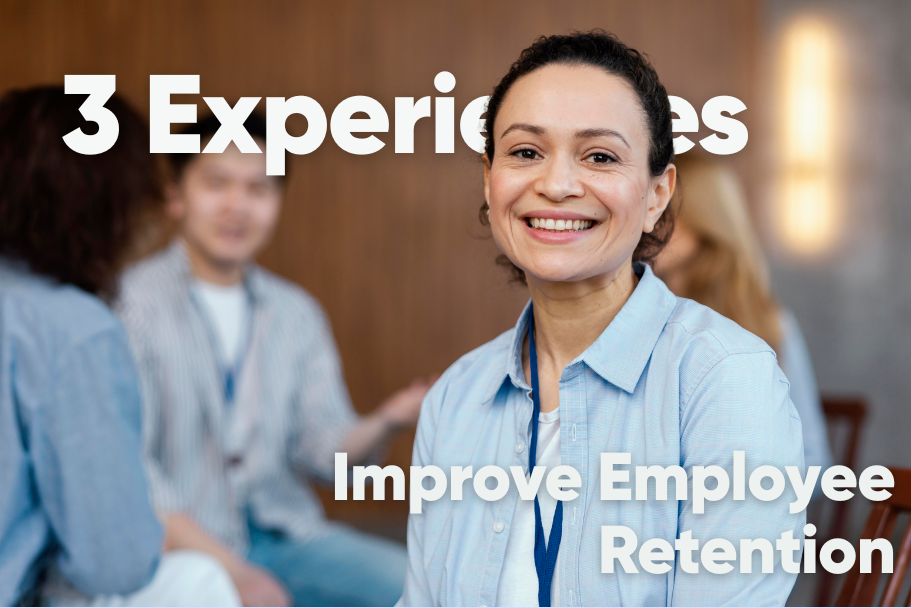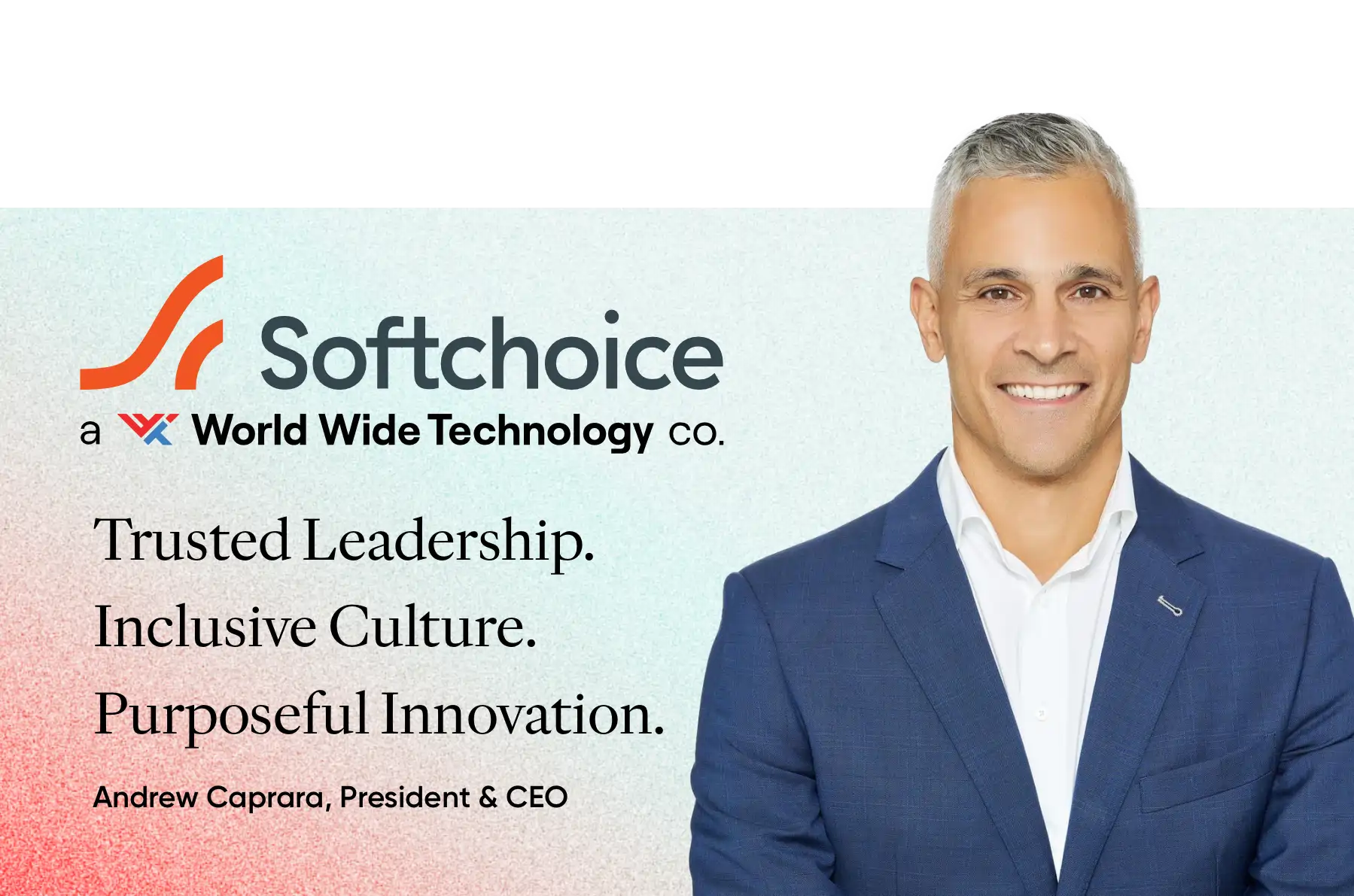Employees are first and foremost people – they have multiple identities, interests, passions and goals. So when looking to engage people at work it’s important to see employees holistically and understand who they are, what excites them and what interests they have outside of work. By doing so you can help them develop their whole self, not just their professional self. And when they are able to bring their ‘whole selves’ to work their overall satisfaction, motivation and happiness increases significantly.

A happier, healthier person equals an employee who is prepared for the challenges and stresses of day-to-day work and life.
What we are really talking about here is promoting a deeper level of engagement – perhaps an overused term, but an important one just the same. Understanding your employees on a more personal level and encouraging them to develop skills and interests that go beyond the realm of work sends the message that you care about their health and wellness from many different perspectives: physical, spiritual, environmental, intellectual, emotional and occupational. A happier, healthier person equals an employee who is prepared for the challenges and stresses of day-to-day work and life. And this is the type of employee who comes to work energized and satisfied, knowing that their company cares about them.
ENABLING PERSONAL DEVELOPMENT IN THE CONTEXT OF PROFESSIONAL DEVELOPMENT
The Best Workplaces in Canada are already doing a great job with professional development. Leadership skills training, tuition reimbursement, job related courses and seminars, technical and sales training, online training libraries… the opportunities to develop job specific skills are long and varied. These organizations understand that companies and employees both reap the benefits of training and development programs, including increased job satisfaction, internal promotion opportunities and increased retention. The statistics around personal development however, suggest there is room for improvement in this area. Of the Best Workplaces in Canada:
- Only 35% subsidize non-work related courses.
- 85% have some kind of a wellness or health promotion program.
- 81% of employees agree that management, at the company perspective, shows a sincere interest in them as a person, not just an employee.
- 87% of employees agree with that statement at the workgroup perspective.
Leaders can play a pivotal role in linking the development of employees’ personal interests with their overall professional development. It starts with a commitment to making employees’ needs and interests a priority. An organization that is doing a great job with this is Vega. They pioneered a goal-setting program called iThrive based on the tenets of their Thrive Forward program: Know Better (promotes personal and professional learning), Eat Better (promotes health and nutrition), Feel Better (promotes fitness and wellness), Do Better (promotes volunteerism). These four themes were selected to help employees thrive, be fully supported, and to be fully whole in their work and personal life. Through this program their employees create four goals (one for each theme) that they work towards over the fiscal year. The entire Vega family is there to help and support each other every step of the way. Vegatopians are encouraged to share their iThrive accomplishments with fellow employees, and each month Vega runs an Instagram contest to reward participation. Employees who post a picture with one of our iThrive hash tags -- #ithriveknowbetter or #ithriveeatbetter or #ithrivefeelbetter or #ithrivedobetter, and #ithrivegoalcomplete -- are entered into a draw to receive a V-wear outfit by Tonic.
Giving employees the freedom to explore, share and apply their varied interests and connections encourages them to bring their personalities, their talents and their unique backgrounds to work.
Giving employees the freedom to explore, share and apply their varied interests and connections encourages them to bring their personalities, their talents and their unique backgrounds to work everyday. This creates a strong sense of community, camaraderie, and sharing. What better way to promote cooperation and team building than to bring people together who have a shared goal or interest?
At PEER Group, a provider of factory automation solutions to the high tech industry, an employee suggested they host a lunch’n’learn on the subject of negotiating mortgages. Recognizing that this is a life skill that many people could benefit from, they jumped at the opportunity to help employees gain some inside information. Peer Group invited an independent mortgage broker and a mortgage specialist from RBC to talk about how to negotiate their first mortgage, renew an existing one, or purchase recreational property. Everyone walked away from the session confident they could walk into the bank and play some hardball. This is the type of investment in people that moves the needle in terms of cultural strength and integration. Those participants walked away with a valuable life skill and more importantly, with the firm and resolute awareness that their organization cares about them as people.
ENCOURAGING PERSONAL DEVELOPMENT AND INTERESTS AT WORK
One way to do this is to give employees the time and resources to spend on personal development. Incorporate interests and hobbies as part of your performance management and health and wellness initiatives as well as employee clubs and social events. Encourage people to look at a wide range of activities and to set goals in a wide range of categories. Some ideas to explore include:
- Financial – how much do employees need/want to earn and by what stage? How will they achieve this and how are these goals related to their overall career goals? RBC's Invest In Yourself program is a good example of helping employees with their financial goals. They provide a comprehensive financial education and resources program to motivate employees to take action towards achieving their financial goals. It is a program about financial literacy and not a campaign about RBC’s retirement and savings programs and it is designed to meet the varied needs of RBC's diverse workforce.
- Family – Are there a number of new parents in the office? Are they interested in parenting classes? Do employees have multi-generational needs to take care of? As part of their community involvement with Woods Homes (a children’s mental health centre), Vermillion Energy hosted a parenting workshop for their employees on the topic of “What it takes to connect with your kids these days.” The workshop material was also published on their intranet for those unable to participate due to schedule conflicts or geography.
- Artistic – do employees want to learn to play an instrument? Are there art museums they want to explore? Are they interested in learning to paint, sculpt or dance? Amaya Software created a photography program where employees submit their best scenic photo, which is then printed, framed, and placed around the office for others to view. Amaya purchased a professional photo-printing machine to support this initiative and allows employees to print a large copy of their photograph for their home as well.
- Physical – what sports or wellness activities are employees involved and interested in? How can you encourage team building, friendly competition and personal goal setting around getting active and being physically and mentally healthy? Google created a physical and social infrastructure to help develop communities for mindfulness practice at Google. Called gPause, the program includes formal sitting meditation, mindful lunches, recorded two-minute meditations, guest speakers and community service. For each 20 minutes a Goolger records practicing, Google donates money to programs teaching mindfulness.
- Life Skills – are there common experiences that are limiting employees’ success or ability to get ahead and achieve their larger career goals? Is there a mindset or attitude that is pervasive that you can help them overcome? At TD Bank they set up a Talk English Café to support new immigrants to Canada who need to learn Canadian business language skills and understand local business culture in order to be successful. The Talk English Café is a drop-in style, communication skills development training platform, which covers language skills, business acumen and exposure to Canadian workplace culture.
- Giving Back to the Community – How can employees make the world a better place? Use volunteerism and charitable work as a platform for personal development and inspiration. We Care Wednesdays is a program at Intuit’s Edmonton office where they identified charities and social programs within walking distance of the office. Every Wednesday employees use a portion of the 32 hours they are given to go and contribute to the local community.
The more support you give your employees to pursue their personal goals and skill development, the more they will trust that you have their best interests in mind and ultimately the more engaged and committed they will be. Employees have rich and interesting lives outside of work. By leveraging those interests you create deeper connections and allow everyone to better appreciate the talent and skills within the organization. By exploring skills and interests that employees are keen to learn about you create yet another opportunity to bring employees together, expand their knowledge and build trust within your organization. Help your employees bring their whole selves to work everyday and you will be rewarded with happier, more engaged employees who are passionate about learning and development and eager to stick around.
We welcome you to comment on this article! Please use this public space respectfully and in alignment with our User Conduct Guidelines.



